Hello world, today I’d like to talk about traditional landscape photography composition. When you are shooting a non-abstract scene, you most likely have a fore, mid, and background. Arranging them in a pleasing manner is one of the most fun (and sometimes challenging) aspects of landscape photography. Let me cover an approach you may not have seen before- the dolly zoom.
The dolly zoom is an effect you have seen in countless films. It was first used in Alfred Hitchcock’s Vertigo way back in 1958. It is the moment in a movie when a character realizes there is a vast conspiracy against them, and the whole world grows around them while they stay the same size. The effect is created by placing the camera on a movable dolly, and the camera is moved towards the subject. The cameraman simultaneously zooms out at a rate that keeps the subject the same size, but because of the change in focal length, everything else changes size in relation to them.
Understanding and implementing this effect in your still imagery can have an immense impact on your composition. So how do you do it? And why would you do it?
Consider that there are only two things you can do to change your composition. The first is moving your camera. The second is changing your focal length. The dolly zoom comes into play when you change both your position and your focal length, while attempting to capture the same elements. Below is an example of a waterfall shot 7 times from 14 to 78mm, with similar composition- waterfalls below a gorge filled with autumn leaves. To capture this series, I simply backed up, zoomed in, and recomposed for each shot. In essence I did a dolly zoom on the waterfall. (Although this example is a waterfall, the technique certainly works just as well with mountains, desert spires, etc.)
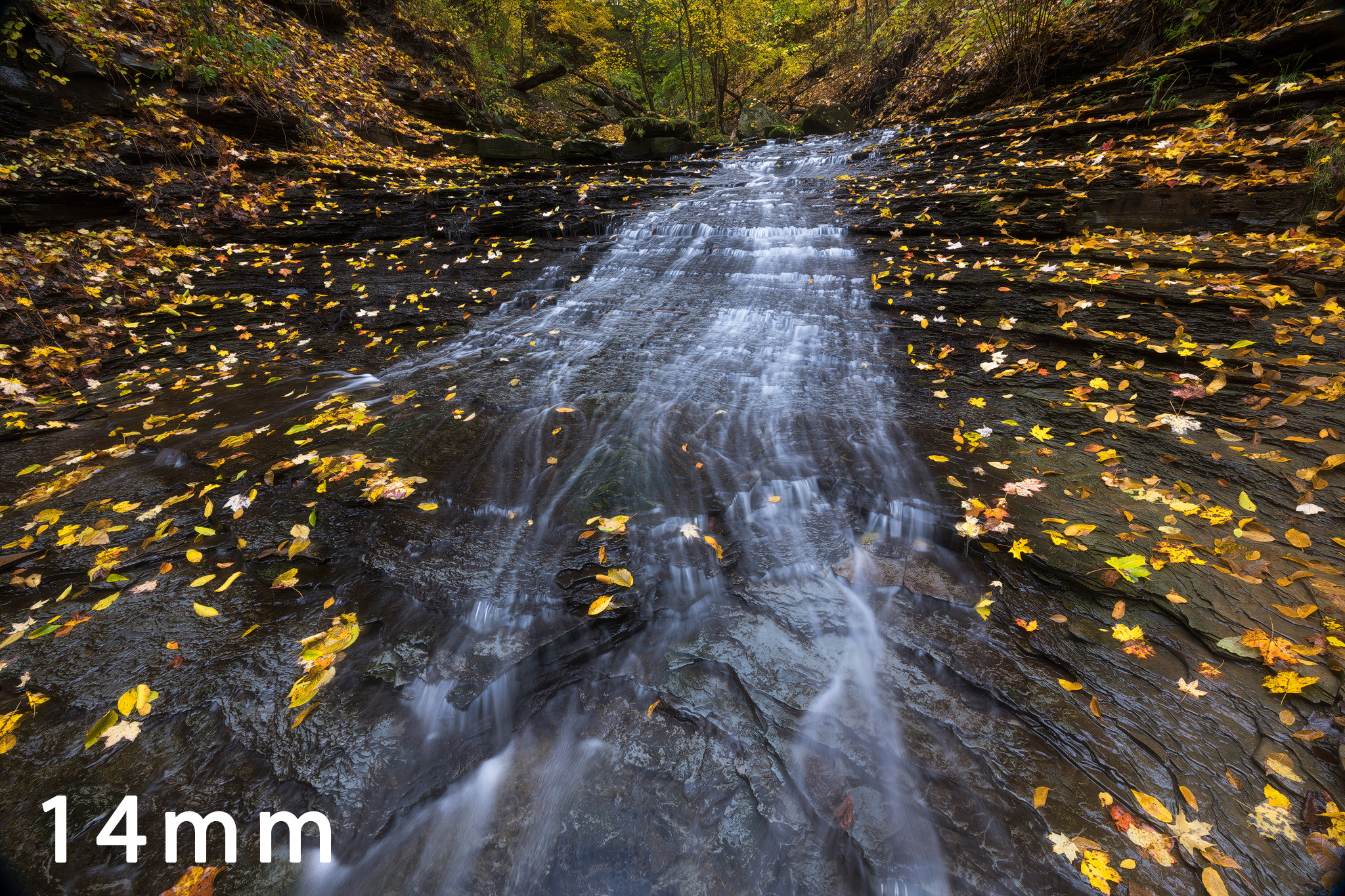
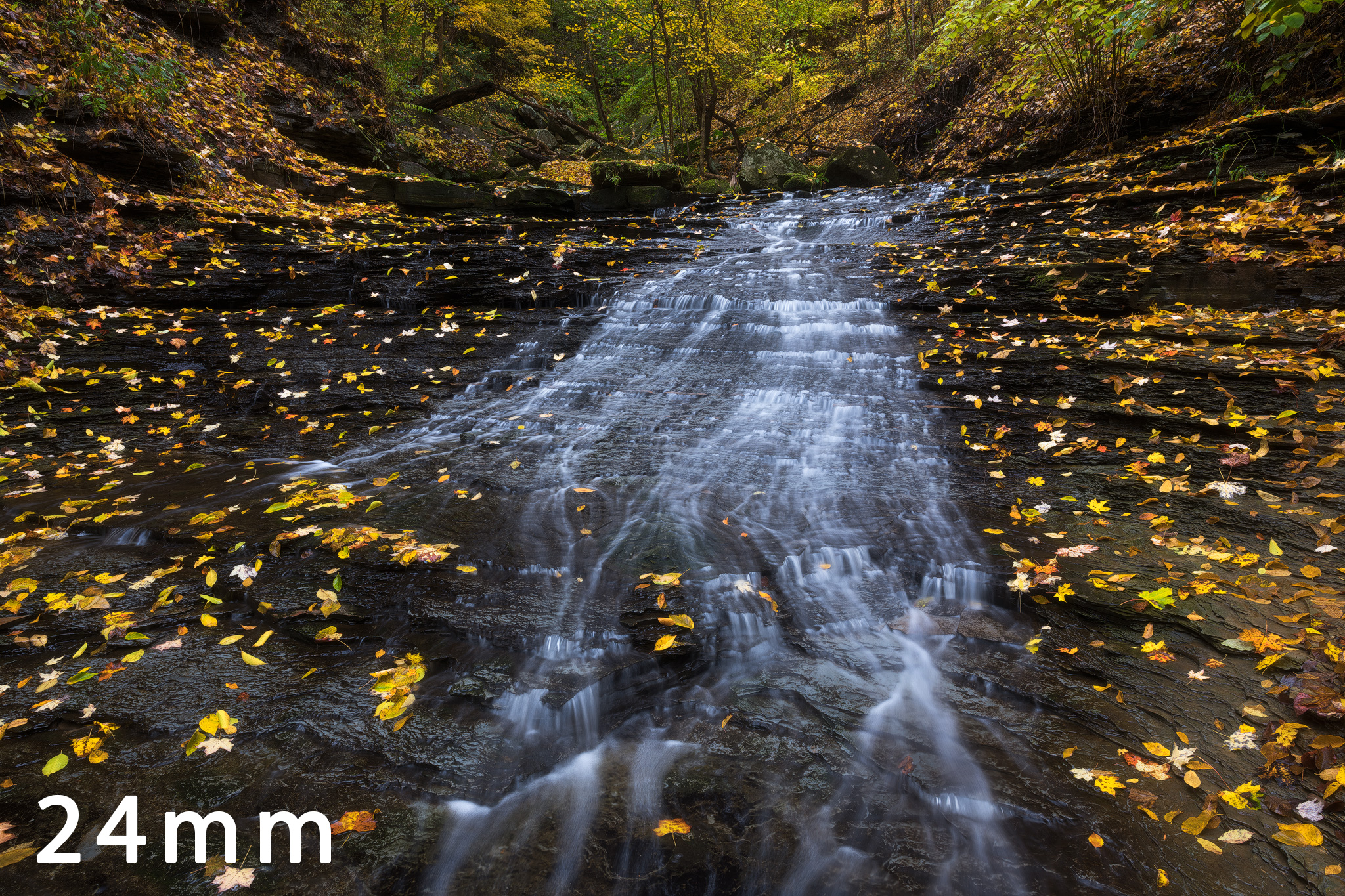
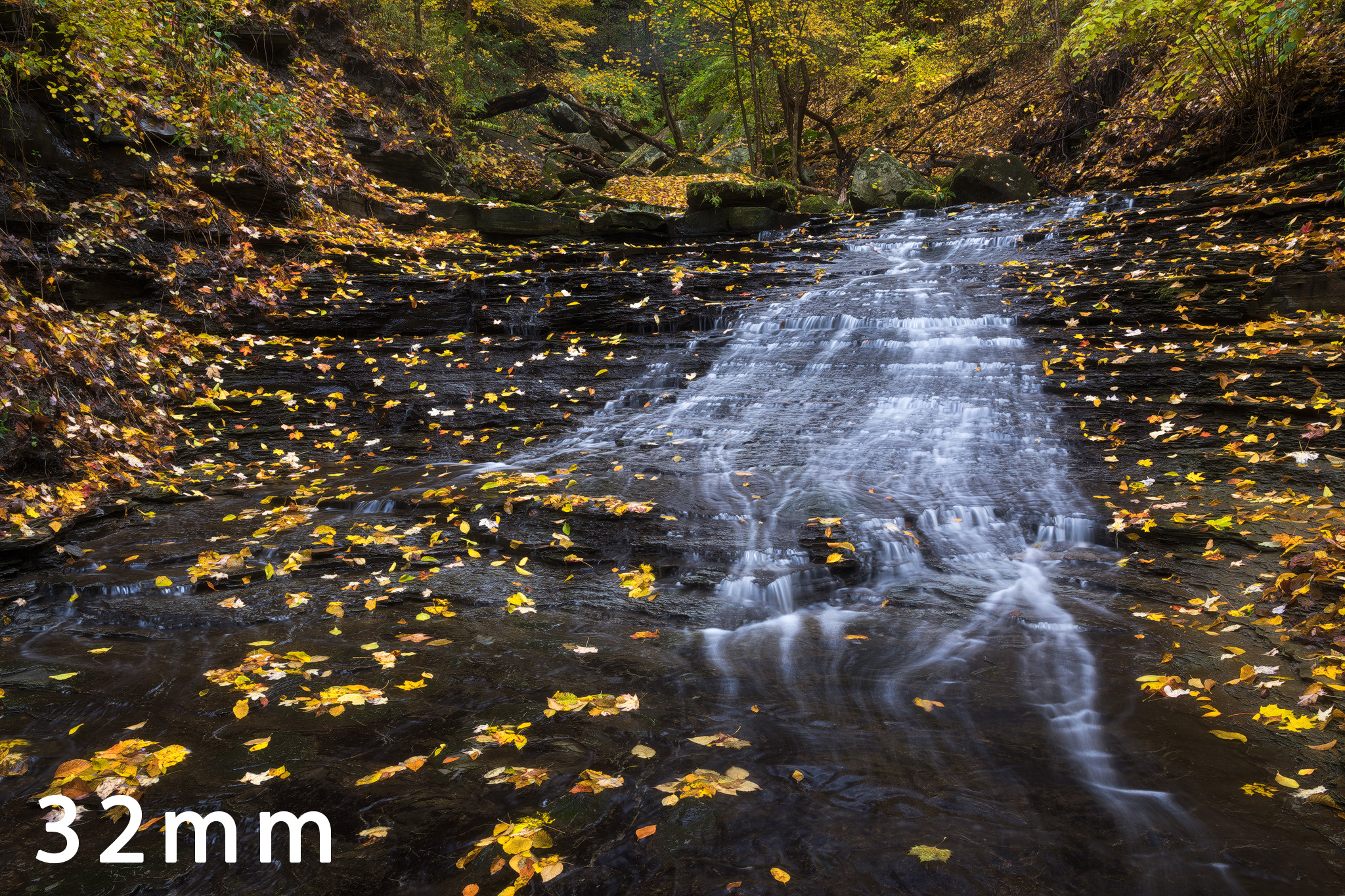
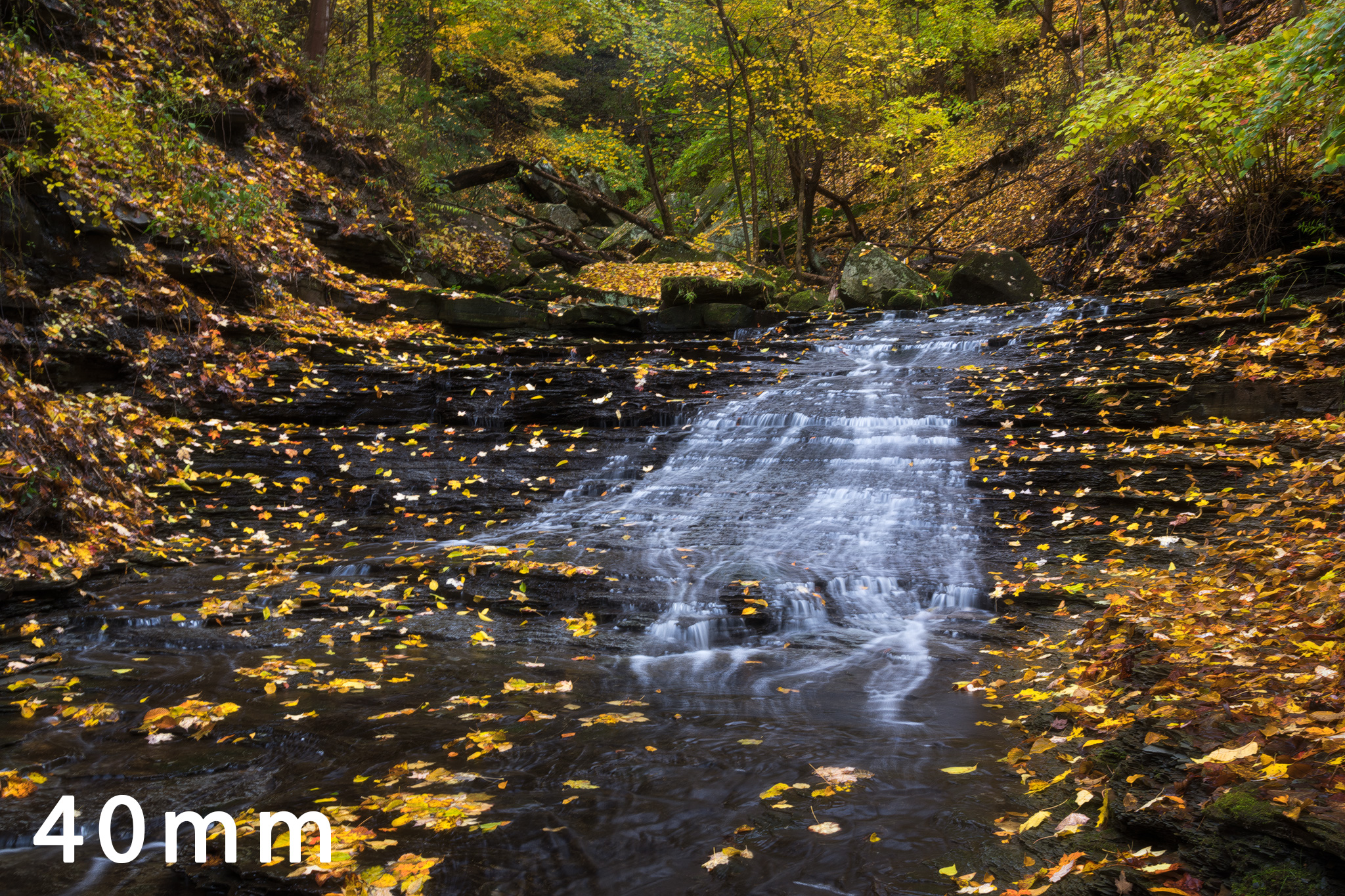
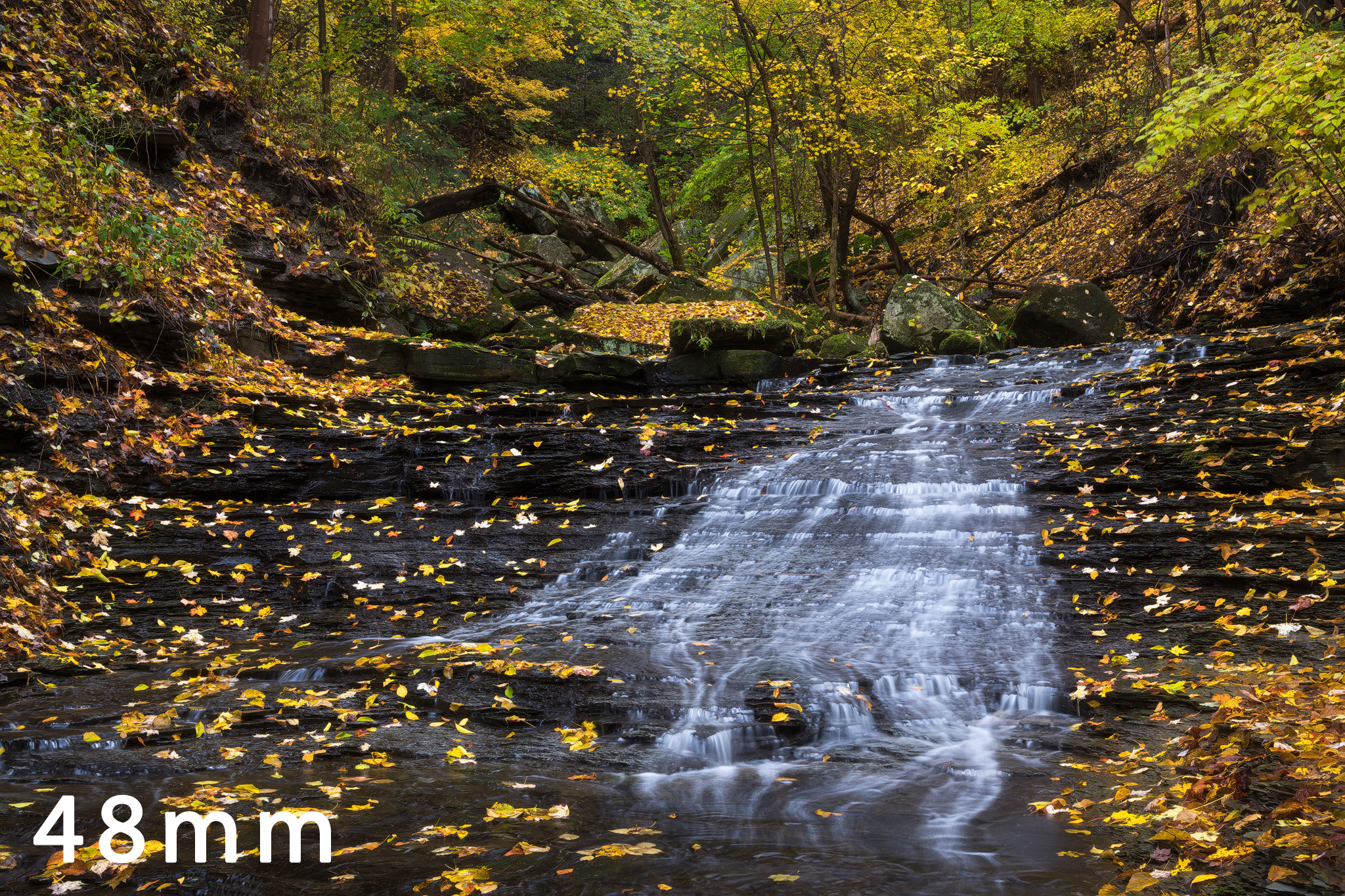
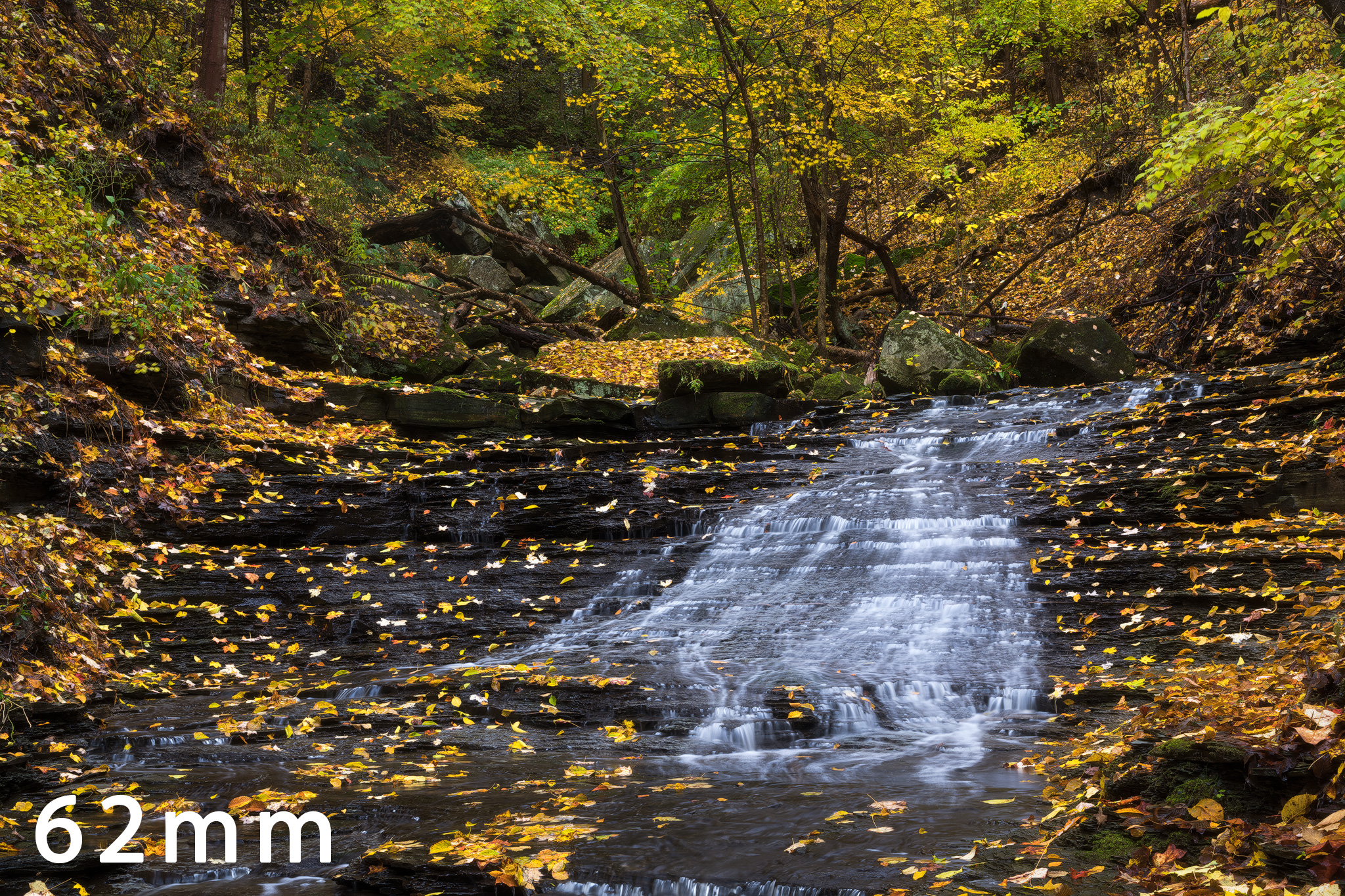
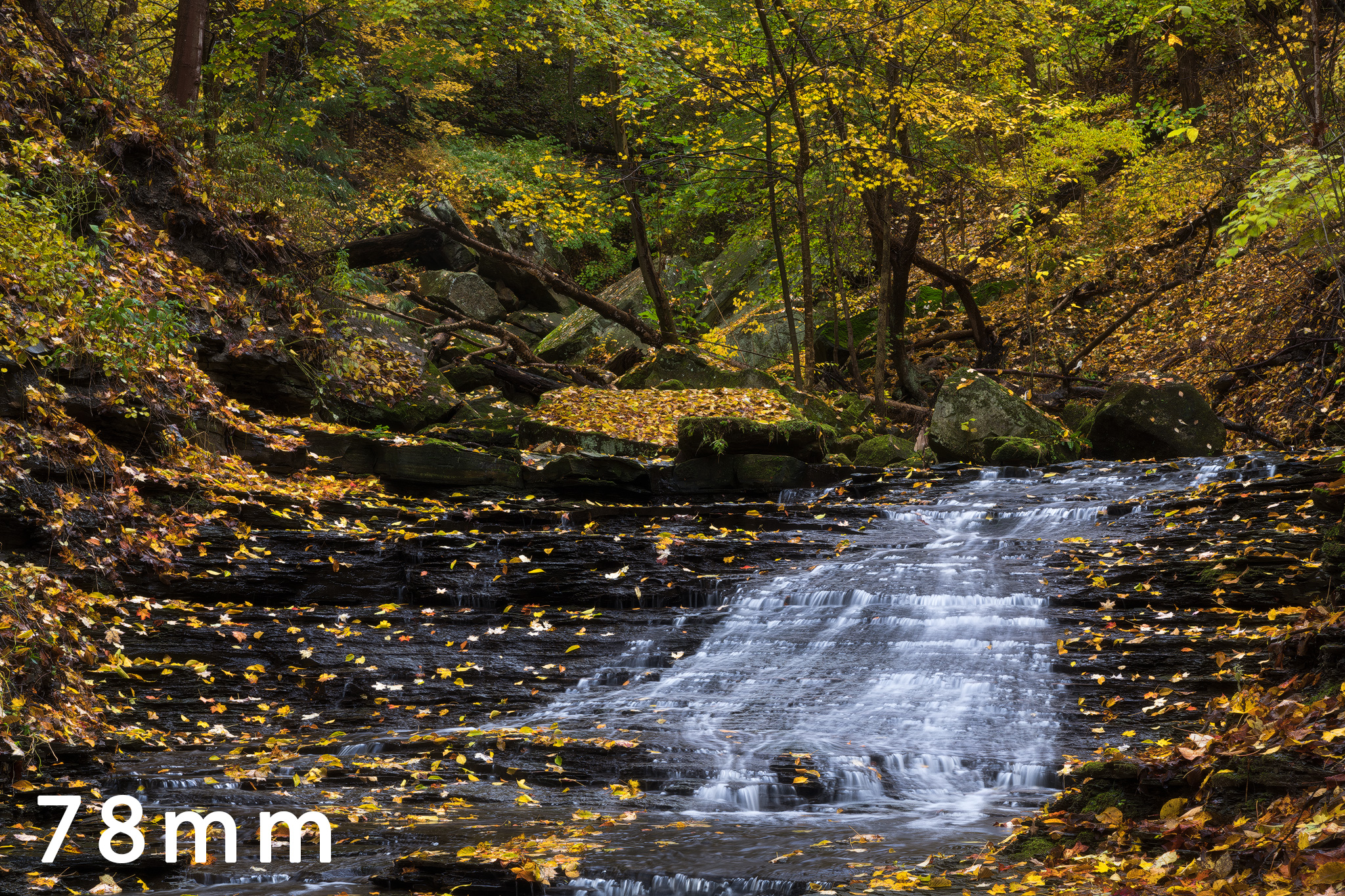
Take a minute to see how the effect changes the feel of the image. At 14-24mm the waterfall certainly dominates, but the neat gorge and leaves take a distant back seat. At 32-40mm, everything is feeling nice and balanced. By 62mm the falls are looking pretty diminutive and the overall flow of the image feels claustrophobic. It’s all a matter of personal opinion but I prefer around the 32-40mm range, not something that would be apparent from just showing up and shooting this waterfall! You may also notice that this is not exactly a strict dolly zoom, because I let the waterfall size change. That’s because I am more interested in the interaction of the foliage filled gorge and the waterfall than keeping things the same size.
Understanding and implementing this effect in your own imagery will add a new dimension to your skillset. When you find a fore and background, you can choose the size relationship between them. Next time you are out, try a couple of different focal lengths of the same composition using the dolly zoom effect. Set the size of your background with your focal length, and the size of your foreground with your feet! (by moving) You will likely find you have a much easier time creating balanced compositions, I know I do!
I’ll leave you with a GIF of the sequence above, cause GIFS are cool.
And finally, I am getting together a mailing list, for any who are interested!
Z
